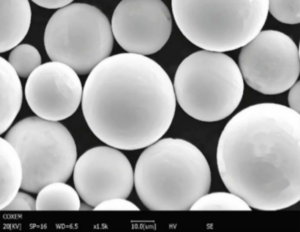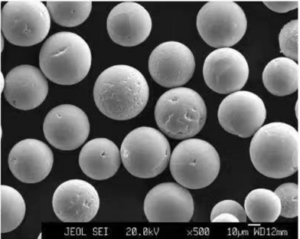Katmanlı imalat dünyayı kasıp kavurdu ve PBF tekniği için toz bu devrimin önemli bir oyuncusu. Bu makale, PBF'de kullanılan metal tozları dünyasına derinlemesine inerek, türlerini, bileşimlerini, özelliklerini, uygulamalarını ve daha fazlasını inceliyor. İster deneyimli bir profesyonel ister meraklı bir acemi olun, bu kapsamlı rehber size değerli bilgiler ve pratik bilgiler sağlayacaktır.
Genel Bakış PBF Tekniği İçin Toz
Toz Yataklı Füzyon (PBF), Seçici Lazerle Eritme (SLM) ve Elektron Işınla Eritme (EBM) gibi çeşitli teknolojileri içeren bir katmanlı imalat kategorisidir. PBF, karmaşık ve hassas parçalar oluşturmak için toz halindeki malzemenin katmanlarını eritme işlemidir. Metal tozu seçimi çok önemlidir, çünkü nihai ürünün kalitesini, mukavemetini ve performansını doğrudan etkiler.
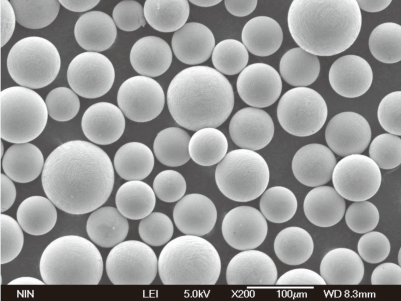
PBF Tekniği için Toz Çeşitleri
PBF'de kullanılan metal tozlarının manzarasını daha iyi anlamak için, belirli modellere ve bunların ayrıntılı açıklamalarına dalalım.
| Metal Tozu | Kompozisyon | Mülkler | Uygulamalar |
|---|---|---|---|
| Ti-6Al-4V | Titanyum alaşımı ( Ti, %6 Al, %4 V) | Yüksek mukavemet, düşük ağırlık, korozyona dayanıklı | Havacılık, tıbbi implantlar, otomotiv |
| 316L Paslanmaz Çelik | Demir alaşımı (-18 Cr, -14 Ni, %2-3 Mo) | Korozyona dayanıklı, iyi mekanik özellikler | Tıbbi cihazlar, gıda işleme ekipmanları |
| AlSi10Mg | Alüminyum alaşımı ( Al, Si, %0,3-0,5 Mg) | Hafif, iyi termal özellikler | Otomotiv, havacılık ve uzay, tüketim malları |
| Inconel 718 | Nikel alaşımı (-55 Ni, -21 Cr, %4,75-5,5 Nb) | Yüksek sıcaklık dayanımı, iyi kaynaklanabilirlik | Havacılık, enerji, otomotiv |
| Maraging Çelik 1.2709 | Demir alaşımı ( Ni, %9 Co, %5 Mo, %0,2 Ti) | Yüksek mukavemet, sertlik ve tokluk | Takım, havacılık, otomotiv |
| CoCrMo | Kobalt alaşımı ( Co, -30 Cr, %5-7 Mo) | Aşınmaya dayanıklı, biyouyumlu | Tıbbi implantlar, dişçilik uygulamaları |
| Bakır C18150 | Bakır alaşımı (,85 Cu, %0,15 Zr) | Yüksek termal ve elektriksel iletkenlik | Elektrik bileşenleri, termal yönetim |
| AlSi12 | Alüminyum alaşımı (-89 Al, -12 Si) | Yüksek mukavemet/ağırlık oranı, iyi döküm özellikleri | Otomotiv, havacılık ve uzay |
| Hastelloy X | Nikel alaşımı (-50 Ni, -23 Cr, %8-10 Mo) | Yüksek sıcaklıklarda oksidasyon ve korozyona dayanıklı | Havacılık ve uzay, kimyasal işleme |
| Takım Çeliği H13 | Demir alaşımı (%0,4 C, %5 Cr, %1,3 Mo, %1 V) | Yüksek aşınma direnci, termal kararlılık | Kalıplar, kalıplar, kalıplar |
Bileşimi PBF Tekniği İçin Toz
Bu metal tozlarının bileşimini anlamak, projeniz için doğru malzemeyi seçmek için çok önemlidir. Her tozun benzersiz element karışımı, farklı uygulamalar için uygun hale getiren belirli özellikler kazandırır.
| Metal Tozu | Ana Elementler | İkincil Unsurlar | Safsızlıklar |
|---|---|---|---|
| Ti-6Al-4V | Titanyum, Alüminyum, Vanadyum | Demir, Oksijen | Karbon, Azot |
| 316L Paslanmaz Çelik | Demir, Krom, Nikel | Molibden, Manganez, Silisyum | Fosfor, Kükürt |
| AlSi10Mg | Alüminyum, Silikon, Magnezyum | Demir, Bakır | Titanyum, Çinko |
| Inconel 718 | Nikel, Krom, Niyobyum | Molibden, Titanyum, Alüminyum | Karbon, Kobalt |
| Maraging Çelik 1.2709 | Demir, Nikel, Kobalt, Molibden | Titanyum, Alüminyum | Karbon, Silisyum |
| CoCrMo | Kobalt, Krom, Molibden | Nikel, Demir | Manganez, Silikon |
| Bakır C18150 | Bakır, Zirkonyum | – | Demir, Kurşun |
| AlSi12 | Alüminyum, Silisyum | Demir, Bakır | Manganez, Çinko |
| Hastelloy X | Nikel, Krom, Molibden | Demir, Kobalt | Manganez, Silikon |
| Takım Çeliği H13 | Demir, Krom, Molibden, Vanadyum | Karbon, Silisyum, Manganez | Fosfor, Kükürt |
Özellikleri PBF Tekniği İçin Toz
PBF'de kullanılan her metal tozu türü, onu belirli uygulamalar için uygun hale getiren farklı özelliklere sahiptir. Burada bu özellikleri ayrıntılı olarak inceliyoruz.
| Metal Tozu | Yoğunluk (g/cm³) | Erime Noktası (°C) | Çekme Dayanımı (MPa) | Uzama (%) | Sertlik (HV) |
|---|---|---|---|---|---|
| Ti-6Al-4V | 4.43 | 1660 | 900-1100 | 10-15 | 330 |
| 316L Paslanmaz Çelik | 7.99 | 1375-1400 | 480-620 | 30-40 | 200 |
| AlSi10Mg | 2.68 | 570-580 | 300-350 | 5-10 | 120 |
| Inconel 718 | 8.19 | 1260-1336 | 965-1241 | 10-20 | 330 |
| Maraging Çelik 1.2709 | 8.0 | 1413 | 2000-2500 | 5-10 | 500 |
| CoCrMo | 8.29 | 1330-1390 | 900-1300 | 10-20 | 500 |
| Bakır C18150 | 8.96 | 1083 | 350-410 | 20-30 | 110 |
| AlSi12 | 2.68 | 570-580 | 200-300 | 5-10 | 80 |
| Hastelloy X | 8.22 | 1260-1350 | 700-1000 | 30-40 | 200 |
| Takım Çeliği H13 | 7.80 | 1425-1530 | 1000-1200 | 10-15 | 600 |
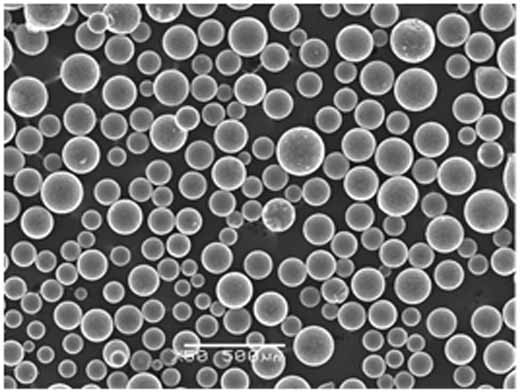
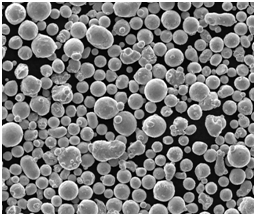
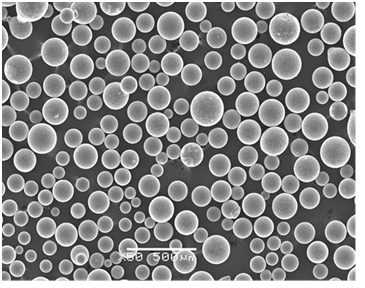
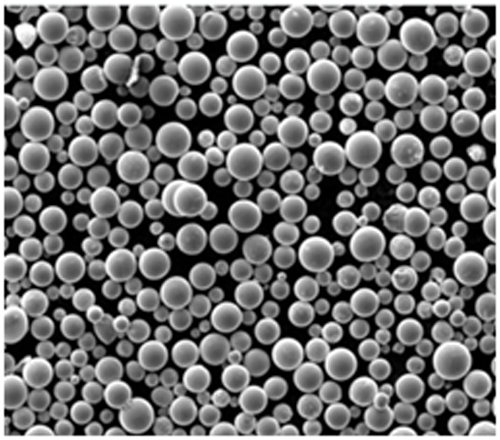
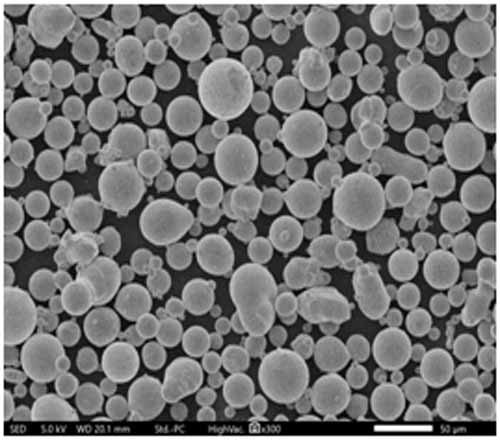
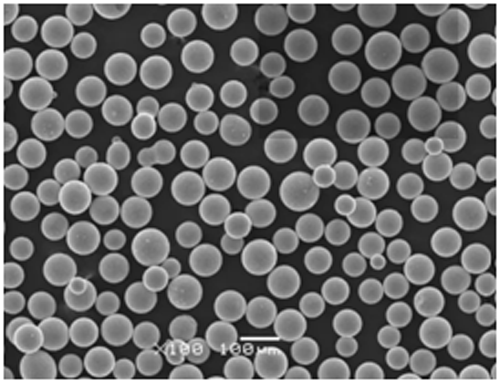
PBF Tekniği için Tozun Uygulamaları
PBF için metal tozları, çeşitli endüstrilerde farklı uygulamalara sahiptir. İşte her bir toz türünün nerede mükemmel olduğuna daha yakından bir bakış.
| Metal Tozu | Endüstri | Özel Uygulamalar |
|---|---|---|
| Ti-6Al-4V | Havacılık, Tıbbi | Uçak bileşenleri, implantlar |
| 316L Paslanmaz Çelik | Tıbbi, Gıda | Cerrahi aletler, gıda işleme ekipmanları |
| AlSi10Mg | Otomotiv, Havacılık | Hafif parçalar, prototipler |
| Inconel 718 | Havacılık ve Uzay, Enerji | Türbin kanatları, roket motorları |
| Maraging Çelik 1.2709 | Takım, Havacılık ve Uzay | Yüksek mukavemetli aletler, yapısal bileşenler |
| CoCrMo | Tıbbi, Diş | Eklem replasmanları, diş protezleri |
| Bakır C18150 | Elektrik, Termal | Elektrik konnektörleri, ısı eşanjörleri |
| AlSi12 | Otomotiv, Havacılık | Motor bileşenleri, braketler |
| Hastelloy X | Havacılık, Kimyasal | Yanma odaları, kimyasal reaktörler |
| Takım Çeliği H13 | Takım, Kalıplama | Enjeksiyon kalıpları, döküm kalıpları |
Sınıflar PBF Tekniği İçin Toz
Farklı metal tozu kaliteleri, belirli uygulamalar için doğru malzemenin seçilmesini sağlar. İşte yaygın olarak kullanılan tozlar için mevcut bazı kaliteler.
| Metal Tozu | Notlar | Açıklama |
|---|---|---|
| Ti-6Al-4V | 5. Sınıf, 23. Sınıf | Standart ve ekstra düşük ara sürüm |
| 316L Paslanmaz Çelik | 316L, 316LVM | Düşük karbonlu ve vakumla eritilmiş versiyonlar |
| AlSi10Mg | Standart | Yaygın olarak kullanılan kalite |
| Inconel 718 | AMS 5662, AMS 5663 | Havacılık ve yüksek sıcaklık kaliteleri |
| Maraging Çelik 1.2709 | Standart | Yaygın olarak kullanılan kalite |
| CoCrMo | F75, F1537 | Tıbbi implant kaliteleri |
| Bakır C18150 | Standart | Yaygın olarak kullanılan kalite |
| AlSi12 | Standart | Yaygın olarak kullanılan kalite |
| Hastelloy X | AMS 5754, UNS N06002 | Yüksek sıcaklık ve korozyona dayanıklı kaliteler |
| Takım Çeliği H13 | Standart, H13 ESR | Yaygın ve elektro-cüruf arıtılmış versiyonlar |
Teknik Özellikler, Boyutlar ve Standartlar
Her metal tozu türü, endüstri gereksinimlerini karşılamak için belirli standartlar ve boyutlarla birlikte gelir.
| Metal Tozu | Parçacık Boyutu (µm) | Standartlar | Tedarikçi | Fiyat (kg başına) |
|---|---|---|---|---|
| Ti-6Al-4V | 15-45 | ASTM B348, ASTM F2924 | EOS, Arcam, AP&C | $300 – $500 |
| 316L Paslanmaz Çelik | 15-45 | ASTM A276, ASTM F138 | GKN, Sandvik, Carpenter | $100 – $150 |
| AlSi10Mg | 20-63 | DIN EN 1706, ASTM B361 | SLM Çözümleri, EOS | $80 – $120 |
| Inconel 718 | 15-45 | AMS 5662, AMS 5663 | Praxair, Sandvik, LPW | $150 – $250 |
| Maraging Çelik 1.2709 | 15-45 | AMS 6512 | Carpenter, Sandvik | $200 – $300 |
| CoCrMo | 20-63 | ASTM F75, ASTM F1537 | Carpenter, EOS | $200 – $400 |
| Bakır C18150 | 15-45 | ASTM B124, ASTM B152 | Sandvik, Carpenter | $50 – $100 |
| AlSi12 | 20-63 | DIN EN 1706 | EOS, SLM Çözümleri | $70 – $110 |
| Hastelloy X | 15-45 | AMS 5754, UNS N06002 | Praxair, Sandvik | $200 – $300 |
| Takım Çeliği H13 | 20-63 | ASTM A681 | Carpenter, Sandvik | $100 – $200 |
PBF Tekniği için Tozun Artıları ve Eksileri
Doğru metal tozunu seçerken, her seçeneğin avantajlarını ve dezavantajlarını tartmak önemlidir.
| Metal Tozu | Artıları | Eksiler |
|---|---|---|
| Ti-6Al-4V | Yüksek mukavemet/ağırlık oranı, korozyona dayanıklı | Pahalı, işlenmesi zor |
| 316L Paslanmaz Çelik | Mükemmel korozyon direnci, biyouyumlu | Bazı alaşımlara göre daha düşük mukavemet |
| AlSi10Mg | Hafif, iyi termal iletkenlik | Daha düşük mukavemet ve sertlik |
| Inconel 718 | Yüksek sıcaklık dayanımı, iyi kaynaklanabilirlik | Pahalı, işlenmesi zor |
| Maraging Çelik 1.2709 | Son derece yüksek mukavemet, iyi işlenebilirlik | Pahalı, ısıl işlem gerektirir |
| CoCrMo | Yüksek aşınma direnci, biyouyumlu | Pahalı, işlenmesi zor |
| Bakır C18150 | Mükemmel termal ve elektriksel iletkenlik | Yumuşak, aşınmaya eğilimli |
| AlSi12 | İyi döküm özellikleri, hafif | Daha düşük mukavemet ve sertlik |
| Hastelloy X | Mükemmel oksidasyon ve korozyon direnci | Pahalı, işlenmesi zor |
| Takım Çeliği H13 | Yüksek aşınma direnci, termal kararlılık | Pahalı, ısıl işlem gerektirir |
PBF için Doğru Tozu Seçme
Doğru tozu seçmek, malzeme özellikleri, uygulama gereksinimleri ve maliyet dahil olmak üzere çeşitli faktörlerin dikkate alınmasını içerir. Karar vermenize yardımcı olacak bir karşılaştırma.
| Faktör | Ti-6Al-4V | 316L Paslanmaz Çelik | AlSi10Mg | Inconel 718 | Maraging Çelik 1.2709 | CoCrMo | Bakır C18150 | AlSi12 | Hastelloy X | Takım Çeliği H13 |
|---|---|---|---|---|---|---|---|---|---|---|
| Güç | Yüksek | Orta | Orta | Yüksek | Çok Yüksek | Yüksek | Orta | Orta | Yüksek | Yüksek |
| Ağırlık | Düşük | Orta | Düşük | Orta | Orta | Yüksek | Yüksek | Düşük | Yüksek | Orta |
| Korozyon Direnci | Yüksek | Çok Yüksek | Orta | Yüksek | Orta | Çok Yüksek | Düşük | Orta | Çok Yüksek | Orta |
| Termal İletkenlik | Orta | Düşük | Yüksek | Orta | Düşük | Düşük | Çok Yüksek | Yüksek | Orta | Düşük |
| Maliyet | Yüksek | Orta | Düşük | Yüksek | Yüksek | Yüksek | Düşük | Düşük | Yüksek | Orta |
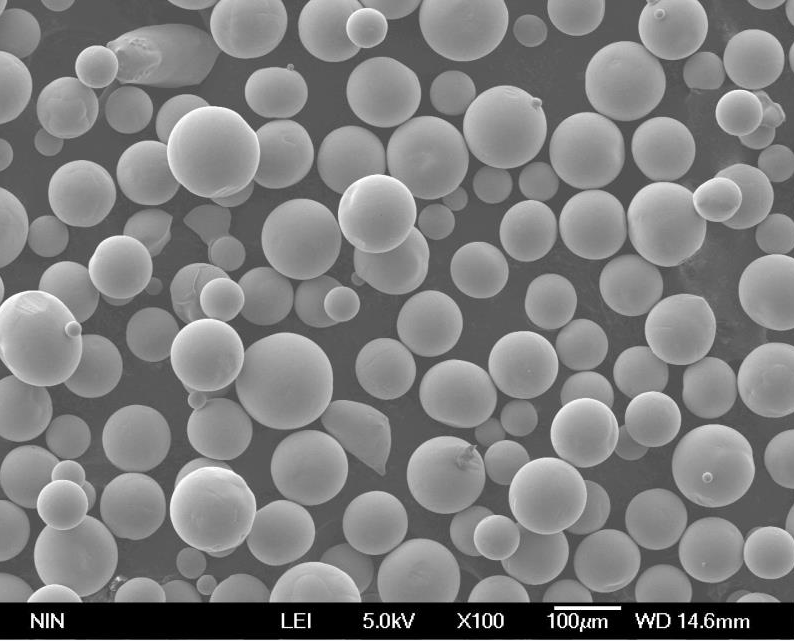
SSS
| Soru | Cevap |
|---|---|
| Katmanlı imalatta PBF nedir? | PBF (Toz Yataklı Füzyon), bir lazer veya elektron ışını gibi bir ısı kaynağının, 3B bir nesne oluşturmak için toz halindeki malzemeyi katman katman erittiği bir katmanlı imalat türüdür. |
| Başlıca PBF türleri nelerdir? | Başlıca PBF türleri, Seçici Lazerle Eritme (SLM) ve Elektron Işınla Eritme'dir (EBM). SLM, ısı kaynağı olarak bir lazer kullanırken, EBM bir elektron ışını kullanır. |
| Toz seçimi neden önemlidir? | Toz seçimi, basılan parçanın mekanik özelliklerini, yüzey kalitesini ve genel kalitesini etkiler. Farklı tozlar, belirli uygulamalar için çok önemli olan farklı mukavemet, termal iletkenlik, korozyon direnci ve diğer özellikler sunar. |
| Toz kalitesi nasıl kontrol edilir? | Toz kalitesi, parçacık boyutu dağılımı, kimyasal bileşim ve saflık gibi çeşitli ölçümlerle kontrol edilir. Üreticiler, tozlarında tutarlılık ve güvenilirlik sağlamak için ASTM ve ISO gibi standartları kullanır. |
| Farklı tozlar karıştırılabilir mi? | Genel olarak, farklı tozların karıştırılması, tutarsız özelliklere ve düşük parça kalitesine yol açabileceğinden önerilmez. Ancak, bazı araştırma ve deneysel kurulumlarda, belirli özellikleri elde etmek için özel karışımlar kullanılabilir. |
| PBF ile ilgili yaygın zorluklar nelerdir? | Yaygın zorluklar arasında toz geri dönüşümü, gözenekliliğin kontrolü, tutarlı katman yapışması ve kalıntı gerilmelerin yönetimi yer alır. Bu zorlukların üstesinden gelmek için gelişmiş teknikler ve dikkatli proses kontrolü esastır. |
| PBF'de toz nasıl geri dönüştürülür? | Kullanılmayan toz toplanabilir ve sonraki yapımlarda yeniden kullanılabilir, ancak kalite standartlarını karşıladığından emin olmak için dikkatlice elenmeli ve test edilmelidir. Zamanla, geri dönüştürülmüş toz bozulabilir ve kaliteyi korumak için taze tozun karıştırılması gerekir. |
| Çevresel etkileri nelerdir? | PBF teknikleri, azaltılmış malzeme israfı ve tozu geri dönüştürme yeteneği nedeniyle geleneksel üretim yöntemlerinden daha sürdürülebilir olabilir. Ancak, makinelerin enerji tüketimi ve (bazı durumlarda) inert gaz ortamlarına duyulan ihtiyaç, yönetilmesi gereken çevresel etkilere sahip olabilir. |
| Hangi endüstriler PBF'den en çok faydalanıyor? | Havacılık, tıp ve otomotiv endüstrileri, geleneksel üretim yöntemleri kullanılarak yapılması zor veya imkansız olan karmaşık, yüksek mukavemetli ve hafif parçalar üretme yeteneği nedeniyle PBF'den önemli ölçüde faydalanmaktadır. |
| Projem için doğru tozu nasıl seçerim? | Mekanik özellikler, termal iletkenlik, korozyon direnci ve maliyet gibi uygulamanızın özel gereksinimlerini göz önünde bulundurun. Bilgilendirilmiş bir karar vermek için malzeme veri sayfalarını inceleyin ve toz tedarikçilerine veya uzmanlara danışın. |
Sonuç
PBF tekniği için metal tozları dünyasında gezinmek karmaşık olabilir, ancak bu tozların türlerini, bileşimlerini, özelliklerini ve uygulamalarını anlamak çok önemlidir. Artıları ve eksileri tartarak ve projenizin özel ihtiyaçlarını göz önünde bulundurarak, katmanlı imalat çabalarınızın başarısını sağlayacak bilinçli bir
